nginx
Posted xue_yun_xiang
tags:
篇首语:本文由小常识网(cha138.com)小编为大家整理,主要介绍了nginx相关的知识,希望对你有一定的参考价值。
一、概述

1、反向代理
反向代理:就是nginx 可以代理我们的tomcat ,用户只需要访问nginx 不需要知道真正提供服务的Tomcat 的ip,通过nginx 访问就可以了
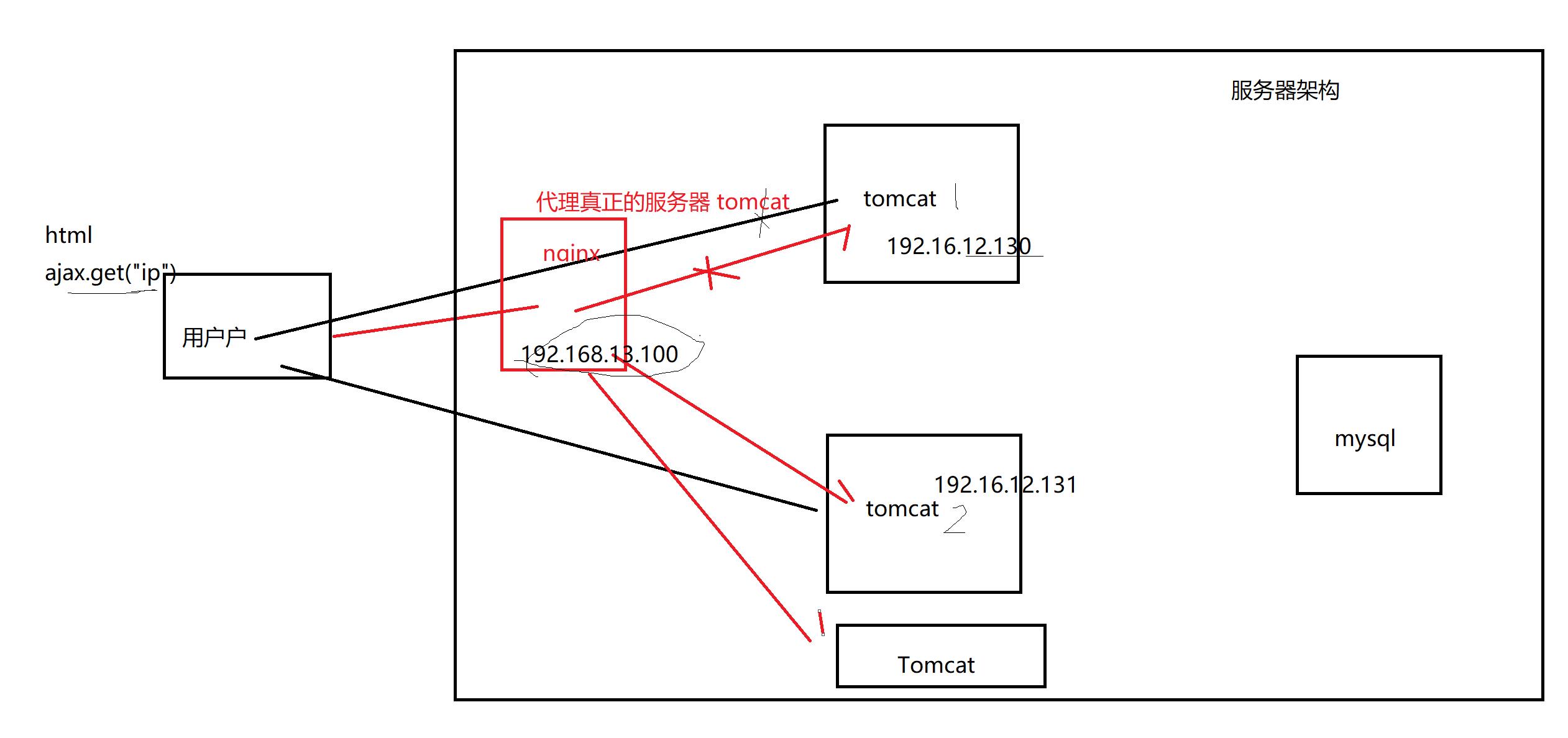
正向代理:客户端主动需要一台代理服务器 ,通过代理服务器去访问目标服务器
2、负载均衡
就是用户请求过来到达nginx ,nginx 将请求 转发个tomcat 处理 响应请求,如果每秒都有1000次请求,nginx 会根据tomcat 机器的性能 均衡分配(能者多劳)
假如 每秒中 1000ge 请求 (QPS)
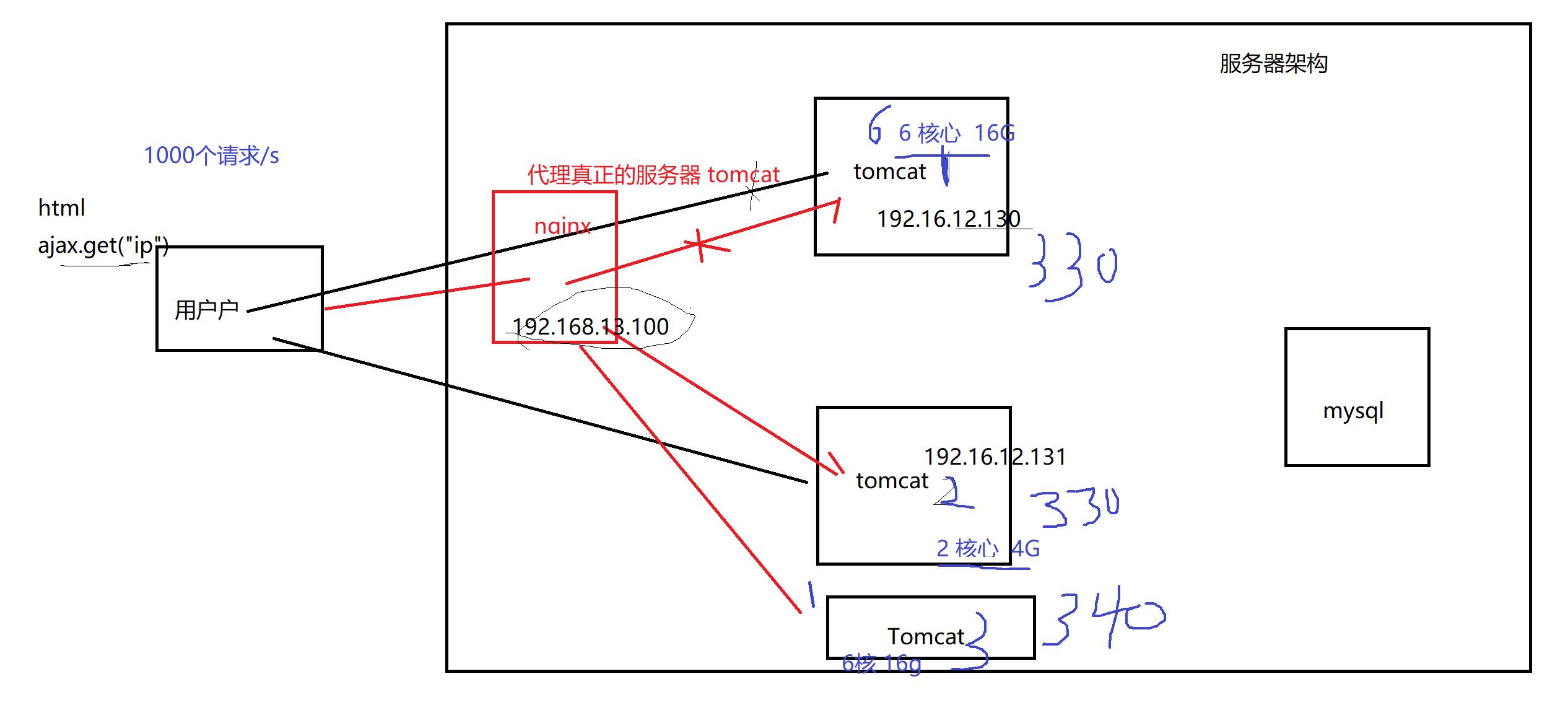
3、动静分离
就是将我们以前工程中的 静态资源 放在nginx中,使用nginx 提供静态资源服务,使用tomcat 提供动态资源

二、安装
1、前提保证网络通常
ping www.baidu.com
2、安装环境依赖
yum -y install gcc zlib zlib-devel pcre-devel openssl openssl-devel
3、将 nginx-1.4.2.tar.gz上传linux
4、解压缩到指定目录
[root@mastera ~]# mkdir /usr/nginx
[root@mastera ~]# tar -xzvf nginx-1.4.2.tar.gz -C /usr/nginx/
5、执行配置文件 生成makefile
[root@mastera ~]# cd /usr/nginx/nginx-1.4.2/
[root@mastera nginx-1.4.2]# ls
auto CHANGES.ru configure html man src
CHANGES conf contrib LICENSE README
[root@redis01 nginx-1.4.2]# ./configure
6、编译安装
[root@mastera nginx-1.4.2]# make
[root@mastera nginx-1.4.2]# make install
7、切换到nginx 的安装目录
[root@mastera nginx-1.4.2]# pwd
/usr/nginx/nginx-1.4.2
[root@mastera nginx-1.4.2]# cd /usr/local/nginx/
[root@mastera nginx]# ls
conf html logs sbin
8、启动nginx
[root@mastera nginx]# ./sbin/nginx

让nginx 重现加载配置文件
[root@mastera nginx]# ./sbin/nginx -s reload
停止nginx
[root@mastera nginx]# ./sbin/nginx -s stop

三、niginx配置
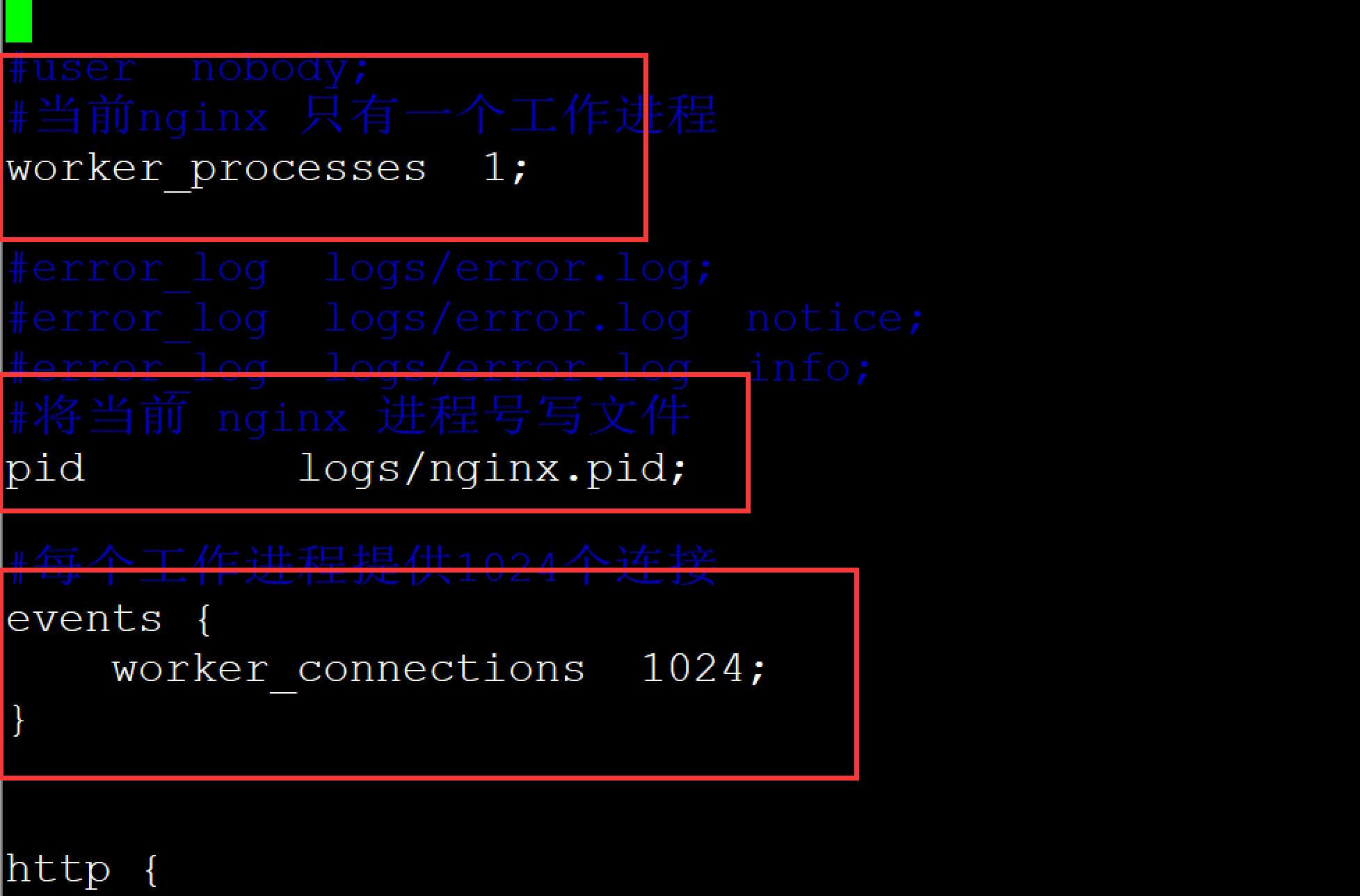

#一个 location 就是一个nginx 的请求映射
#当前映射 匹配 / 根路径,所有的请求都会去 配置root 对应目录下去找资源
# http://192.168.12.130/index.html
location /
root html;
# 配置默认访问页 首页 http://192.168.12.130 === http://192.168.12.130/index.html
index index.html index.htm;
1、nginx 配置静态资源
静态资源就是html 图片 css js 音频
# 只能匹配image
location /image/
root /usr/local/nginx;
# 匹配所有以 gif jp jpeg png .. 结尾的文件
location ~* \\.(gif|jpg|jpeg|png|css|js|ico)$
root /usr/local/nginx/;
expires 30d;
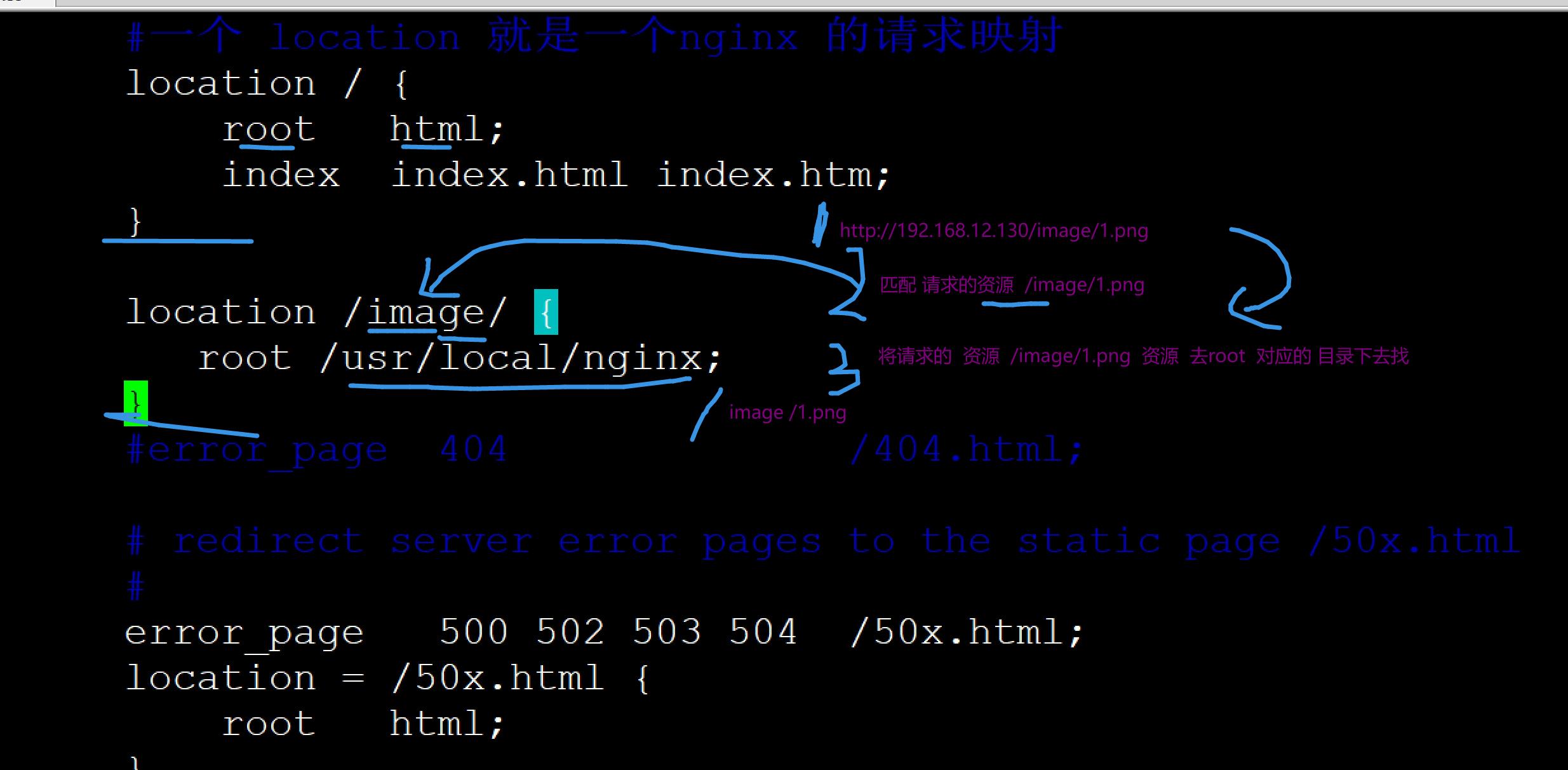
2、配置图片静态路径
1、在conf/nginx.conf 添加路径映射
# 只能匹配image
location /image/
root /usr/local/nginx;
2、在 /usr/local/nginx 创建 image 文件夹,上传图片
3、nginx 重新加载配置文件
[root@mastera nginx]# ./sbin/nginx -s reload
4、访问

3、路径映射优先级
路径映射优先级 从高到底,依次降低
1. 直接匹配
location = /
精准匹配,主机名后面不能带任何的字符串
2. 通用匹配
location /xxx
匹配所有以/xxx开头的路径
3. 正则匹配
location ~ /xxx
匹配所有以/xxx开头的路径
4. 匹配开头路径
location ^~ /images/
匹配所有以/images开头的路径
5. 匹配后缀
location ~* .(gif|jpg|png)$
匹配以gif或者jpg或者png为结尾的路径
6. 全部通配
location /
匹配全部路径
四、反向代理
1、创建springboot工程
<parent>
<groupId>org.springframework.boot</groupId>
<artifactId>spring-boot-starter-parent</artifactId>
<version>2.0.3.RELEASE</version>
<relativePath/>
</parent>
<dependencies>
<dependency>
<groupId>org.springframework.boot</groupId>
<artifactId>spring-boot-starter-web</artifactId>
<version>2.0.3.RELEASE</version>
</dependency>
</dependencies>
<build>
<plugins>
<!-- 将spring boot 应用打为jar -->
<plugin>
<groupId>org.springframework.boot</groupId>
<artifactId>spring-boot-maven-plugin</artifactId>
</plugin>
</plugins>
</build>
2、创建启动类
@SpringBootApplication
public class MyApplication
public static void main(String[] args)
SpringApplication.run(MyApplication.class,args);
3、创建配置文件
server.port=8080
4、创建controller
@RestController
public class HelloController
@Value("$server.port")
private int port;
@RequestMapping("/test1")
public String test1()
return "myport:"+port;
5、创建html
<!DOCTYPE html>
<html lang="en">
<head>
<meta charset="UTF-8">
<title>Title</title>
</head>
<body>
<h1> hi nginx !!!!</h1>
<img src="image/1.png">
</body>
</html>
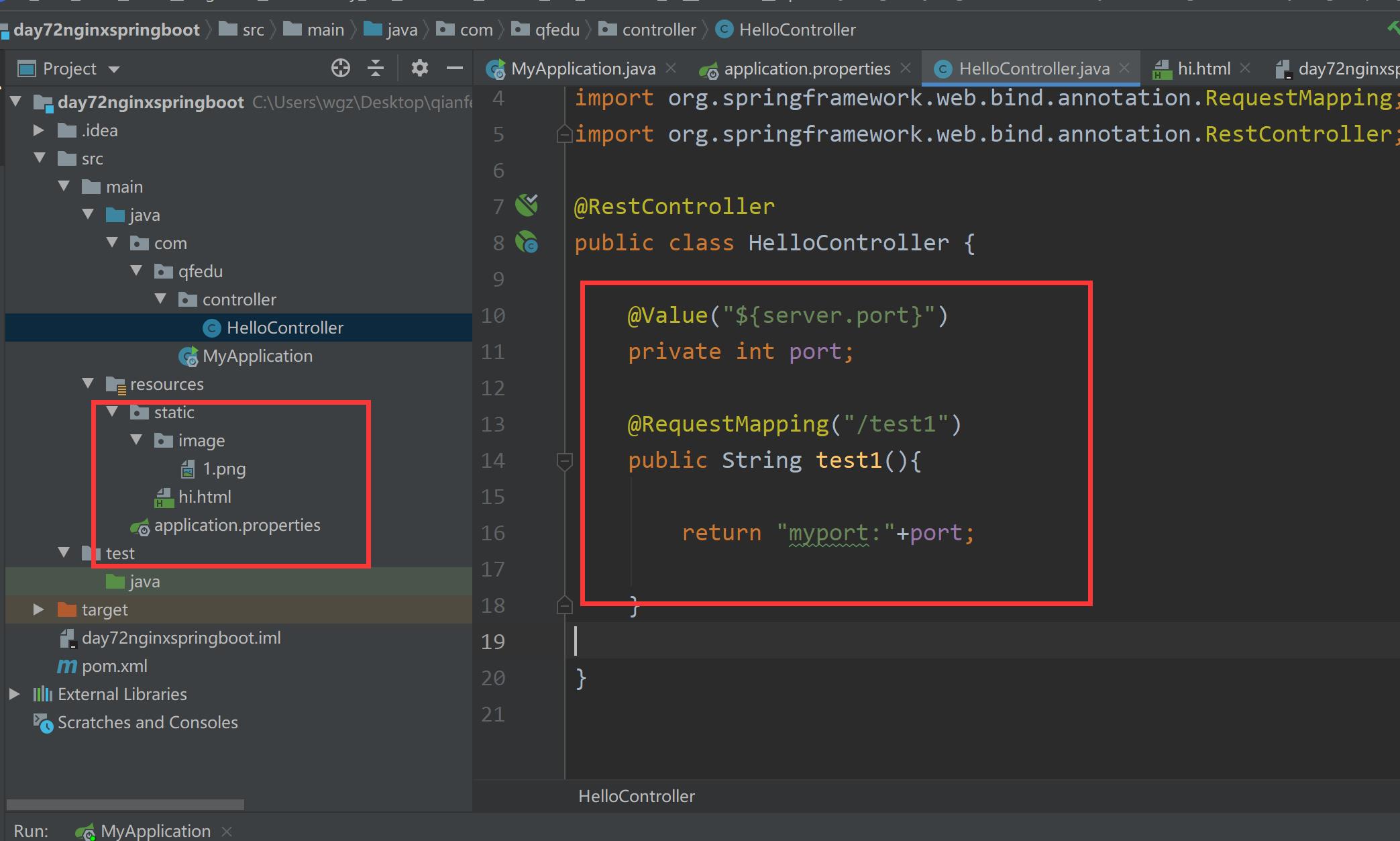
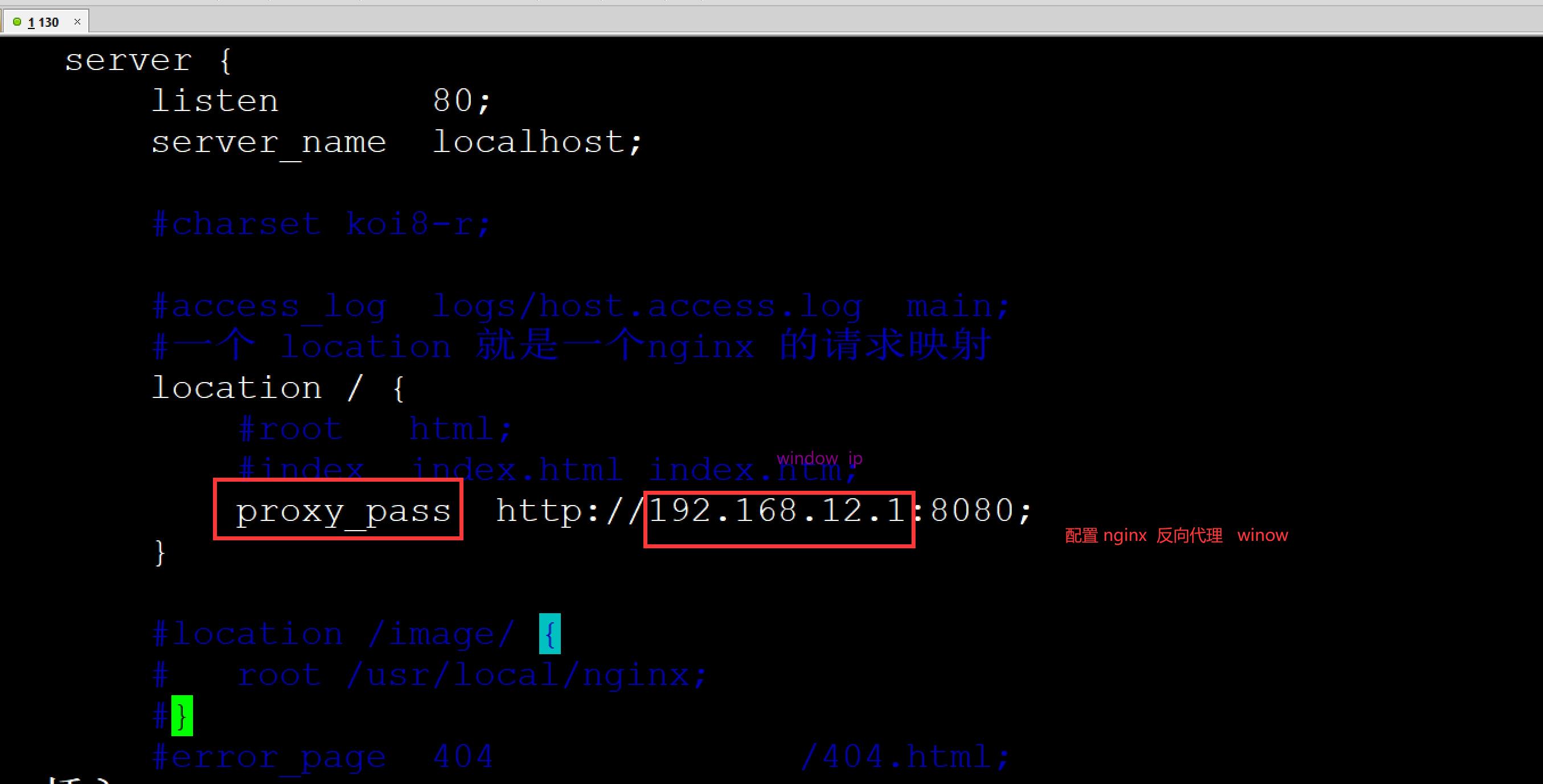
6、测试
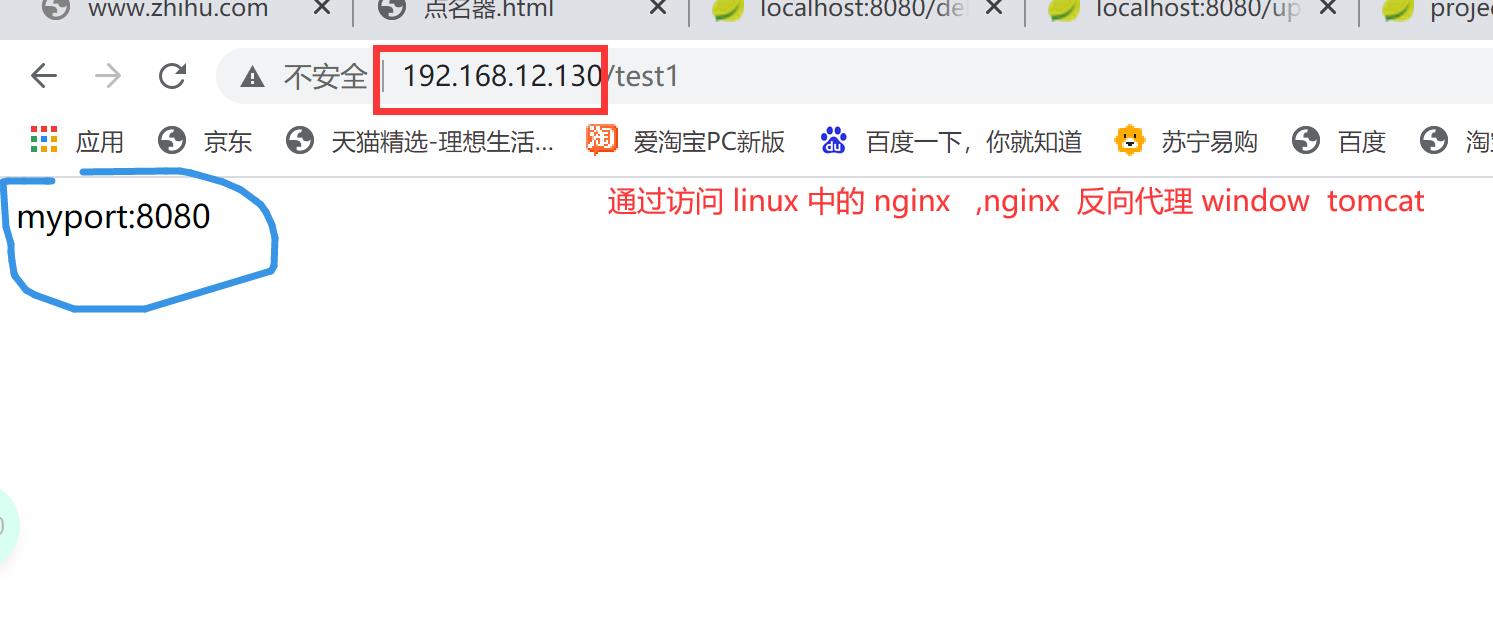
五、配置动静分离
1、将工程中static 目录 拷贝到nginx 目录中

2、修改配置文件
#access_log logs/host.access.log main;
#一个 location 就是一个nginx 的请求映射
location /
#root html;
#index index.html index.htm;
proxy_pass http://192.168.12.1:8080;
# 就是所有 以 html jpb 结尾的文件 都去 root(映射根节点) 对应linux目录
location ~ .*\\.(html|htm|gif|jpg|jpeg|bmp|png|ico|js|css)$
expires 24h;
root /usr/local/nginx/static;

3、重新加载配置文件
[root@mastera nginx]# ./sbin/nginx -s reload
4、测试

为什么要做动静分离?
1.tomcat 加载静态资源性能差
2.让tomcat专注于 响应用户动态请求,降低Tomcat压力
3.修改静态代码,不需要重置tomcat ,只需要将nginx 对应静态目录文件 替换就可以
六、负载均衡
负载均衡:就是nginx 根据配置 让多台tomcat 可以均衡的分配前端请求
1、创建工程
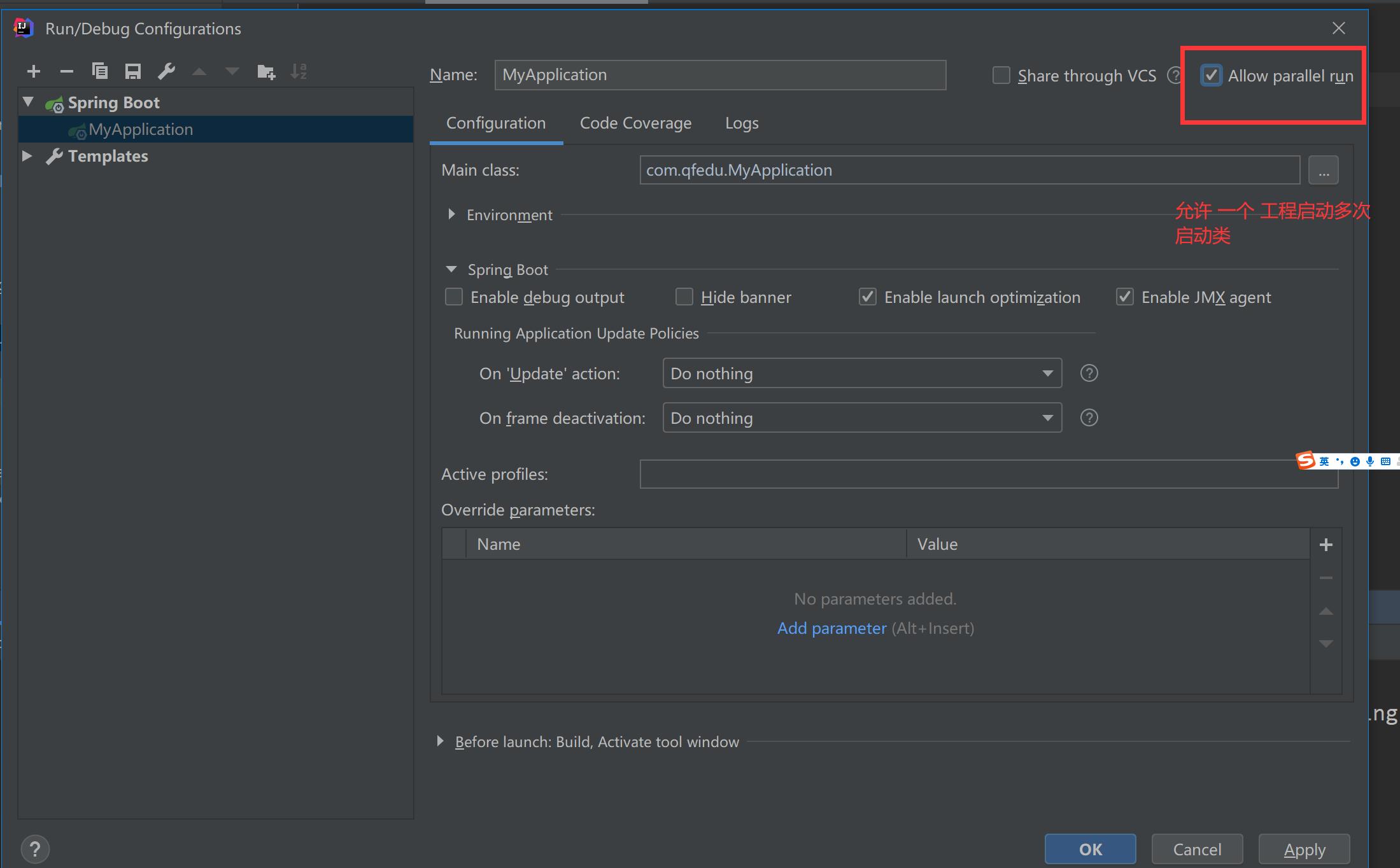
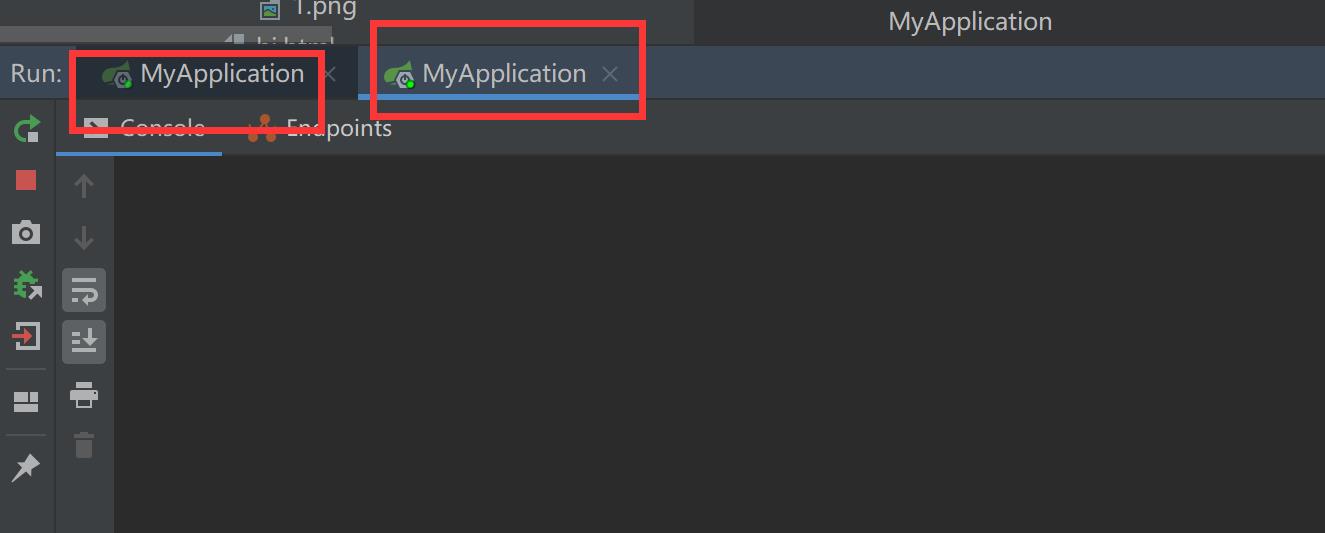
2、修改配置文件
upstream springbootserver
server 192.168.12.1:8080;
server 192.168.12.1:8088;
server
listen 80;
server_name localhost;
#charset koi8-r;
#access_log logs/host.access.log main;
#一个 location 就是一个nginx 的请求映射
location /
#root html;
#index index.html index.htm;
proxy_pass http://springbootserver;
# 就是所有 以 html jpb 结尾的文件 都去 root(映射根节点) 对应linux目录
location ~ .*\\.(html|htm|gif|jpg|jpeg|bmp|png|ico|js|css)$
expires 24h;
root /usr/local/nginx/static;
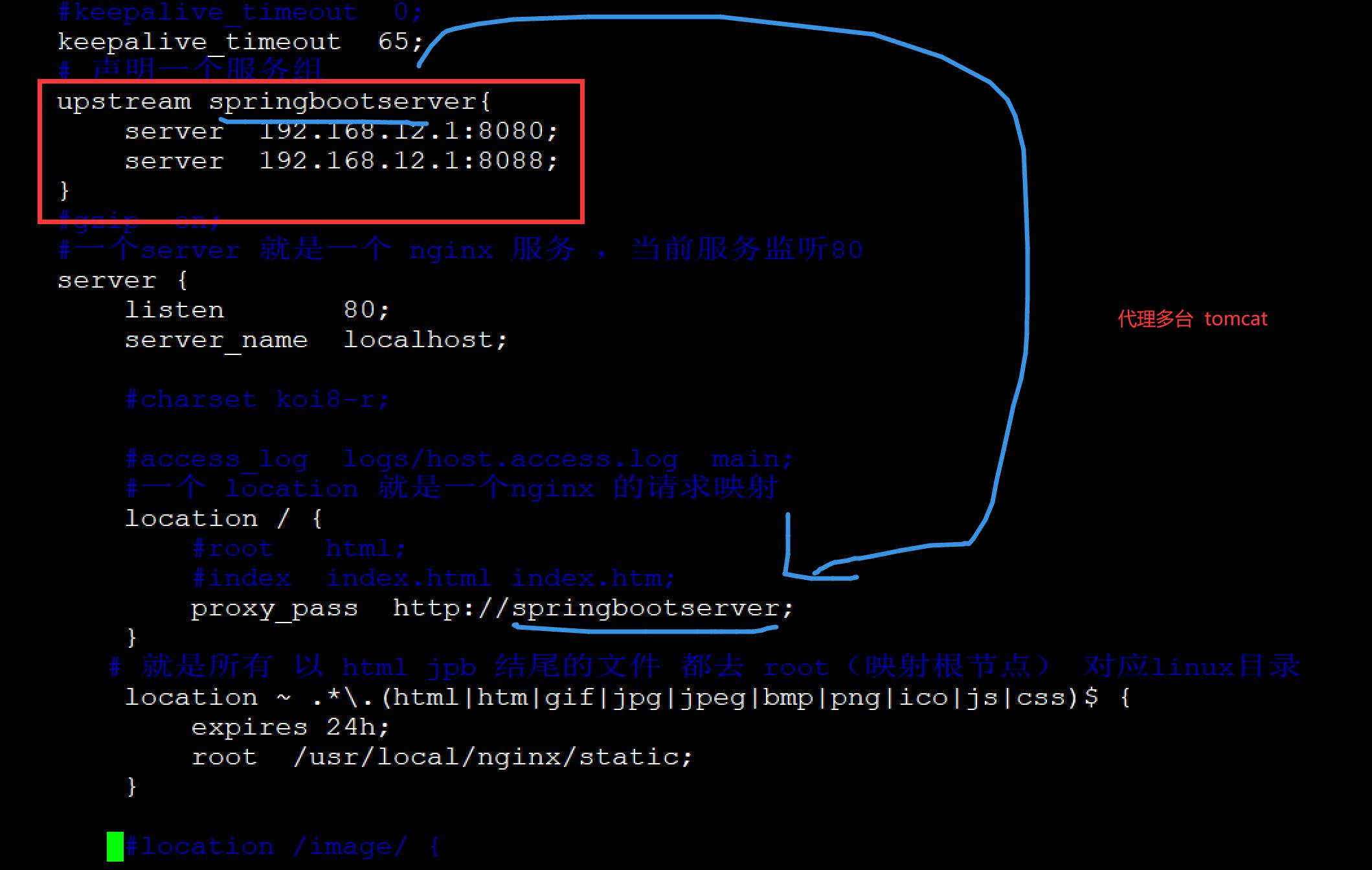
3、重新加载配置文件
[root@mastera nginx]# ./sbin/nginx -s reload
4、测试
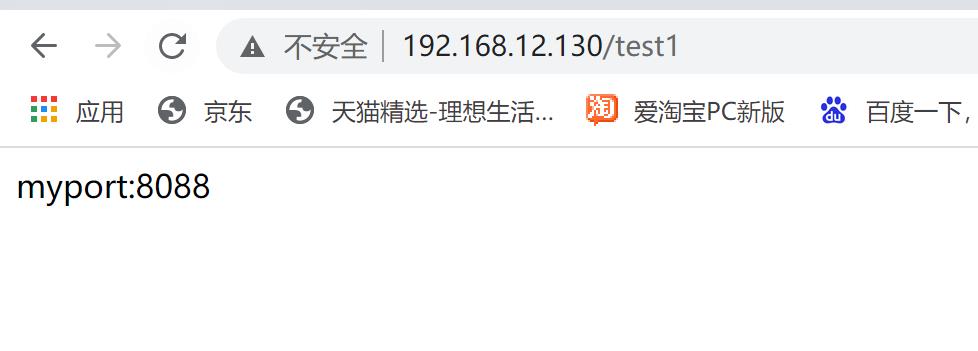
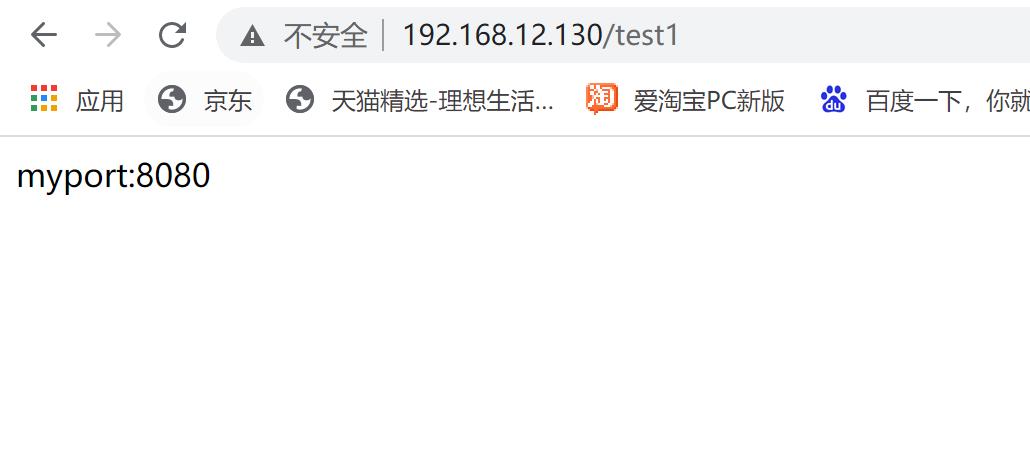
七、负载均衡
1、轮询 ( 默认算法)
2、weight (能者多劳,物尽其用)
upstream springbootserver
server 192.168.12.1:8080 weight=4;
server 192.168.12.1:8088 weight=1;
3、ip_hash
nginx 会根据用户的 ip 对应的hash 对tomcat 数量进行取余,来决定用户访问那一台tomcat;
解决问题 就是:登录时 如果轮询就会在多个tomcat ,产生多个会话,此时使用 ip_hash
upstream springbootserver
ip_hash;
server 192.168.12.1:8080 ;
server 192.168.12.1:8088 ;
用户登录,多台tomcat 提供服务(session 不共享)解决办法:
1.使用nginx ip_hash
2.让tomcat 共享session (存储redis 中)
3.抛弃session 使用token 实现
4、backup
备胎策略 ,所有能用的tomcat 都挂了,备胎上位
upstream springbootserver
server 192.168.12.1:8080 backup;
server 192.168.12.1:8088 ;
5、down
让当前对应的tomcat 下线 ,便于升级tomcat
upstream springserver
server 192.168.13.1:8080 down;
server 192.168.13.1:8088;
6、max_fails
允许请求的失败次数,默认为1,配合fail_timeout一起使用
fail_timeout:
经历max_fails次失败后,暂停服务的时间,默认为10s(某个server连接失败了max_fails次,则nginx会认为该server不工作了。同时,在接下来的 fail_timeout时间内,nginx不再将请求分发给失效的server。)
upstream springserver
server 192.168.13.1:8080;
server 192.168.13.1:8088 max_fails=3 fail_timeout=20s;
以上是关于nginx的主要内容,如果未能解决你的问题,请参考以下文章
